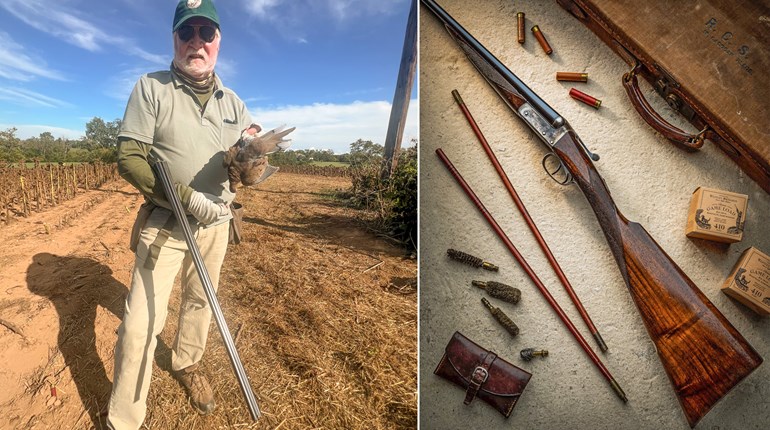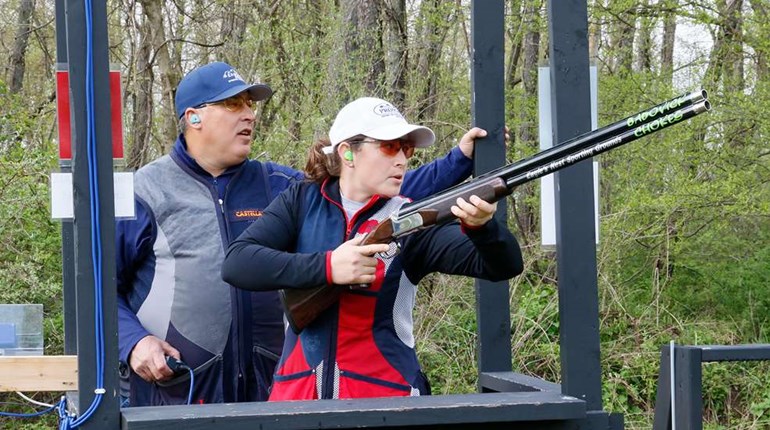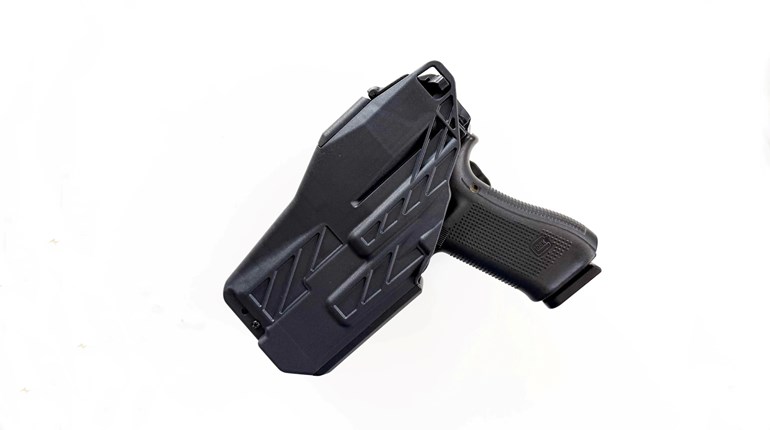
Take a close look at gamebird artwork from a century ago and you will likely see a hunter leveling a double-barrel side-by-side shotgun at a rising rooster ringneck, a covey of flushing quail or possibly a flying ruffed grouse. Fifty years later, similar artwork shows the same gamebirds, but now our intrepid hunter is swinging a pump-action or semiautomatic single-barrel shotgun. Today, it’s back to the double-barrel once again, only this time it’s an over/under shotgun.
That’s a very quick history lesson, but in a nutshell it’s the story of the double-barrel shotgun in America—art imitating life. Philip Schreier, director of NRA Museums, explains.
“Side-by-side shotguns were popular from the era of the percussion age to well past the turn of the 20th Century,” he said. “The side-by-side shotgun was, in all actuality, the gun that won the West, as most every farmer/pioneer that went west carried a side-by-side shotgun.”
Schreier continued, “Once hammerless lock designs were improved, the over/under was a natural progression of the evolution of the shotgun. The gun designing genius of John M. Browning gave America its first over-under in the 1930s, named the Superposed.”
So why then, today, are over/under shotguns much more available than side-by-sides? Longtime gunsmith Jim Eyster (Heritage Gunsmiths, www.jimeyster.com) has the answer.
“Through the years, there is no doubt that over/under shotguns have overtaken side-by-side shotguns in popularity,” he said. “Where that is most evident is in competition shooting, because competitive shotgun shooters want whatever gun works best. So, unless it’s a vintage shoot—meaning the competition is limited to side-by-side shotguns—everyone these days is shooting an over/under when it comes to double-barrels.”
The reason behind that choice, according to Eyster, is that over/under shotgun barrels are easier for manufacturers to collimate than side-by-side barrels; in other words, getting both barrels to shoot at the same place on the center of the target. “Side-by-side shotgun barrels have more issues left and right (horizontal), whereas with over/under shotguns the issues are up and down (vertical), and vertical problems are easier to correct than horizontal,” Eyster said.
Another advantage of over/under shotguns is that both barrels are aligned directly with the rear sight of the shotgun, which is the shooter’s dominant eye. Also, since the barrels are stacked atop one another, a term known as superposed, a shooter can see around and below the barrels of an over/under easier than a side-by-side. This is especially important when shooting rising clay targets or gamebirds flushed from cover.
Recoil is another consideration in the two guns. Because of the differing ways the two shotguns are made, the over/under is usually about a pound heavier than the side-by-side, gauge for gauge. And that can be a good thing, as added weight helps tame recoil.
“In an over/under, recoil occurs in a vertical plane, up and back,” said Eyster. “Recoil in a side-by-side is more in a horizontal plane, resulting in twisting of the shotgun in a shooter’s hands. It’s that twisting that makes side-by-sides a bit slower to get back on target before taking the shot with the second barrel.”
Professional shooting instructor Chris Batha agrees. In his book, The Instinctive Shot, he writes, “I use video in my instruction, and when the tape is played back to my students, they are amazed at the amount of gun movement that happens between the first and second shot when shooting a side-by-side.”
Eyster added that once upon a time all double-barrel shotguns were handmade. A craftsman would skillfully solder the two barrels together, then take the gun to the range to see where it actually shot. The Winchester Model 21 side-by-side shotgun was an excellent example of this fine American craftsmanship. As a result, those classic shotguns are still in high demand yet today.
An interesting historical sidenote about that particular gun is that the famous 20th Century author, hunter and shooter Ernest Hemingway owned a pair of Winchester Model 21 shotguns, keeping those 20-gauge guns around for his wives to shoot—yes, plural, as he was married four times. When he was named Winchester Outdoorsman of the Year in 1959, a presentation-grade 12-gauge Model 21 was specially made and engraved for him, but he died before receiving it.
Today, much of the tedious, painstaking handwork that used to go into producing a good-quality double-barrel shotgun—side-by-side or over/under—has been eliminated. New guns are largely made by machines.
“From a gunsmith’s point of view,” said Eyster, “it’s easier and more economical for a manufacturer to produce an accurate over/under than a side-by-side. As a result, over/under shotguns can be priced more reasonably. The bottom line is that over/unders today are simply easier for most people to own and shoot accurately than side-by-sides.”
All that said, some American side-by-side shotguns are still being manufactured. According to Philip Schreier, “the Connecticut Shotgun Company of Hartford, Connecticut, (https://connecticutshotgun.co/ ), makes the finest American-made side-by-side shotguns available. Anthony Galazan is one of our country’s true craftsmen and artists when it comes to firearms manufacture.”
Vintage side-by-side shotguns remain extremely collectible. There simply aren’t as many available as there used to be, and that scarcity alone is driving prices up. Hunting and shooting nostalgia buffs want them not only as wall-hangers but also to shoot, as long as the guns are in sufficiently safe condition mechanically. So, if there happens to be a side-by-side double-barrel shotgun hiding in the corner of a closet somewhere in your extended family, don’t let it get away.






































